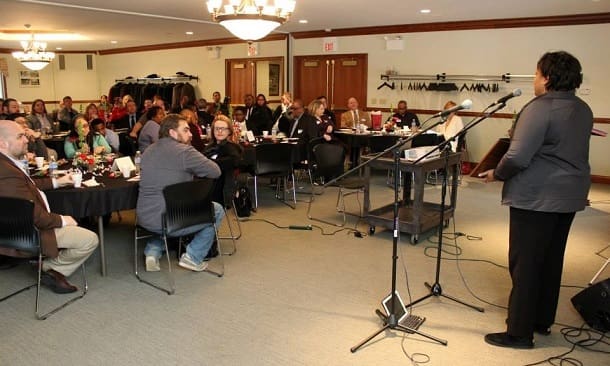
Tell me about your community and the communities that your coalition serves – its population and unique features. When was the coalition formed?
Middletown, Ohio is an urban community situated halfway between Cincinnati and Dayton, and is home to almost 50,000 people. More than 23% of residents live below poverty level and 100% of students now participate in the free and reduced lunch program. Middletown has almost half of all the section 8 housing for the county. The Coalition for a Healthy Middletown was formed in 2008 following a town hall meeting about underage drinking. The coalition was mentored by the Butler County Coalition for Safe and Healthy Communities in 2010 and applied and received the Drug Free Communities grant in 2011.
What unique issues is your coalition facing?
“Addiction, especially heroin addiction, has wreaked havoc with our families in the community,” said the coalition’s Executive Director Kristy Duritsch. “Childhood trauma and its impact cannot be ignored. Too many children have lost one or both parents to overdoses or incarceration and grandparents are struggling in their new role as primary caregivers. Although alcohol use in our youth is trending downward, statistics related to marijuana use is going in the wrong direction. We conducted numerous focus groups over the summer, and it became apparent that too many teens and adults are self-medicating with marijuana. The most recent Youth Drug Use Survey revealed an alarming number of youth have thought about suicide one or more times in the last year. Participants in the focus groups this summer told us they are using marijuana because ‘it helps them with anxiety and depression.’ Why are so many feeling anxious and depressed? We need to dig a little deeper to confirm our suspicions, but we know we need to increase the resiliency in youth in addition to ensuring they have effective/healthy coping skills to deal with their many challenges.”
What activity or program is your coalition most proud of and/or what activity would you like us to spotlight?
“In our first five years of funding we spent a lot of time breaking down walls and coming out of the silos that so many agencies were operating within,” said Duritsch. “We built relationships and created a cohesive sense of prevention and the important role it needs to play when it comes to substance use in youth. Some unique relationships we built are the ones with the four other drug free coalitions in the county. We learn from one another, share resources and training opportunities, and make sure our prevention messages are consistent across the county, including our recent billboard campaign, ‘Drive High and get an OVI.’ This is a very beneficial relationship when working across systems and making changes. Our Coalition was the first in the county to get a medication drop box installed and now there are three 24/7 boxes within our city limits. We were the first to hold a heroin forum in the county when so many were still in denial of the opioid epidemic.”
How did you get there, and what are your outcomes?
Since 2010, 30-day use of alcohol, tobacco, and prescription drugs have gone down. However, marijuana 30-day use continues to increase, and the perception of harm has dropped to 48.4%. “We are working hard to clear up the many misconceptions around marijuana and ramping up our efforts to reduce youth access as the state begins rolling out the first dispensaries, none of which will be in our city limits,” said Duritsch. “We like to think we played a small role in that decision. We are closer to getting a prevention curriculum adopted in our schools and this year a district-wide health center has opened in the high school. The school district’s holistic approach to all students and their families aligns perfectly with our coalition’s efforts to ensure healthy, substance-free youth in our community.”
What advice would you give to other coalitions that may be addressing some of the same issues?
“Our advice to other coalitions is to not get so caught up in prevention activities that you forget to put time in on the relationship building,” said Duritsch. “It truly is about relationships and relationships take time. Unfortunately, even though the world is so connected with texting, emails, webinars and such, we are the most disconnected we have ever been when it comes to relationships. When working with your peers, city leaders, coalition members, parents or youth, building trust through relationships is key. Reach… Connect… Prevent! It starts with a smile! This has been our mantra since we began.”


